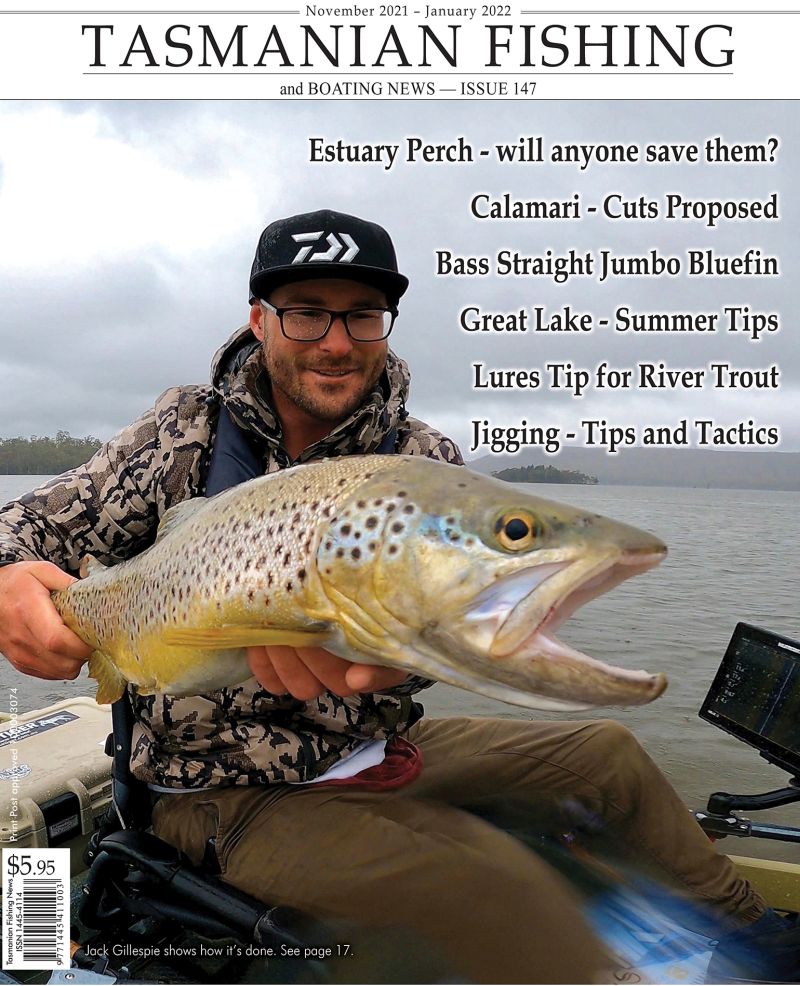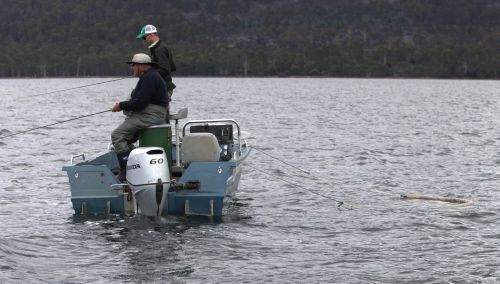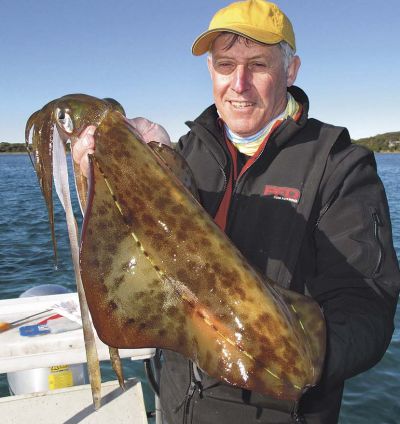 |
|
Mike Stevens with a calamari |
Presented from Issue 112, October 2014
Is it just me, or is time spent with family and friends getting harder and harder to find nowadays? The “work- life balance” side of life seems to have the scales tipped on the “negative’’ at the minute so when opportunities arise that see me heading out onto the water, I tend grab them with both hands…Life is too short to procrastinate.
A fishing opportunity presented itself recently that involved a trip to Georges Bay (St Helens) with Mike Stevens and my daughter Demi, who was keen to take a break from her University studies.
Our target for the day was Southern Calamari the preferred of the two species on offer in Tasmania, the other being the Gould’s Arrow squid, which is widely viewed as being inferior in eating quality. I must add that the Calamari in Georges Bay are amongst some of the biggest you will find anywhere in Australia.
Where to look
Any bottom that has a sea grass or reef base. Squid are ambush predators, they love to cruise around looking for virtually any food source found amongst it that qualifies for a snack.
They are often found lying in camouflaged numbers along the sides of the Georges Bay Channel in a strong incoming tide.
They are generally found in schools that can range from one or two…To literally hundreds. The area off the Akaroa boat ramp (about 100 metres directly in front) also produces good numbers of Calamari on a “year round basis’’.
Whilst a boat is an advantage, it is not a necessity. Most jetties and piers in St Helens are illuminated of a night and as squid are attracted to the light a simple daylight “reconnaissance mission” usually displays the tell-tale signs of squid ink on their boards…A sure sign of previous success for lucky anglers.
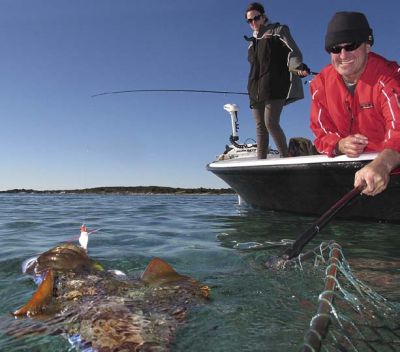 |
| Todd Lambert nets another calamari for daughter Demi. |
Squid ink
Squid have a built in defence mechanism that they unleash when they feel threatened…Ink. It can be messy. That said, it’s also water soluble so if the area that has been squirted is watered down shortly thereafter, it doesn’t pose too much of a problem. Only if it is allowed to dry does it remain a major hassle.
A good tip is when you have one on your line, reel it in horizontally to where you are standing and give it a couple of taps under its head with the landing net, this will see the Squid expel its ink as a reaction.
When landed, squeeze your calamari tightly in- between the hood and the back of its head, if done correctly you will watch it change to a pale white colour as it dies instantly and prevents any further problems.
Another option is cold water euthanasia which consists of a mixture of ice/salt water… Made into a slurry. Be aware, like octopus, squid have a sharp beak that can inflict a nasty bite, but if you hold them from the top of the head, they won’t pose any major threat to your hands.
Gear
We use the same tackle as we would for trout, which consists of 4 pound braid with a six pound fluorocarbon leader around 8 feet in length, this helps on the calm bright days when they seem a bit fussy. A tapered rod also helps absorb the sharp backward lunges that they make as they are being brought towards the net. If your drag is set tight enough to react to these lunges it substantially reduces the amount of pulled hooks. A slow retrieve is essential. Whilst many squid Jigs are available on the market, our preference is the Yo – Zuri brand in the red and white colour, they are quite expensive at around $18 dollars each, but seem to be the preferred option by the Georges Bay inhabitants.
Jamie Henderson at St Helens Bait n Tackle has them in stock.
Cleaning your Catch
There is a tool available called Squid- Ezy, look it up and watch the “YouTube’’ clip, this is an inexpensive tool that makes light work of an otherwise very messy job. The bag limit in Tasmania is 15 per person with an on water possession limit of 10 in South East Waters.
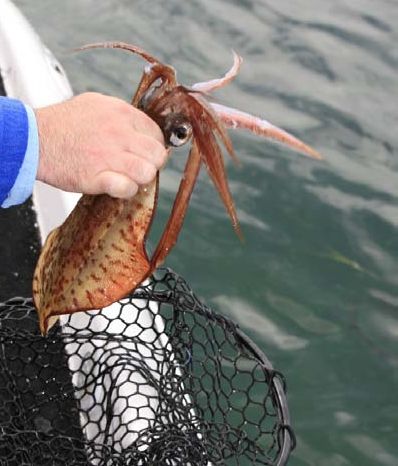 |
| A firm squeeze between the hood and the eyes will kill calamari instantly |
My favourite recipe
Salt and pepper squid
The key to tender squid is to cook it quickly, in hot oil. If it is cooked for too long, it will be chewy. This dish needs to be cooked immediately before serving. Prep: 10 mins; Cooking: 10 mins; Serves 4
Ingredients:
- 4 squid tubes, cleaned
- 1/2 cup cornflour
- 1 teaspoon salt
- 1/2 teaspoon ground white pepper
- 1/2 teaspoon cracked black pepper
- 1/2 teaspoon garlic powder
- 1/2 teaspoon ground dried chillies
- 1/2 teaspoon Chinese five spice
- Vegetable oil, for deep frying
Method:
- Cut the squid tubes open and lay flat.
- Using the blade of a knife, gently scrape the very fine membrane covering the squid to rough it up a bit.
- Score the squid in a criss-cross pattern and cut into strips about 2 cm wide.
- Combine the flour and spices in a bowl.
- Toss the squid through, coating thoroughly.
- Heat the oil in a large pot or a deep fryer to a high temperature (200C).
- Fry the squid in small batches to maintain the heat in the oil.
- The squid should only take 1 to 1 1/2 minutes to turn a light golden brown.
- If it is over cooked it will be very tough.
- Serve with lemon wedges and tartare, or sweet chilli sauce, and green salad.
Conclusion
Squid are fun to catch, fantastic to eat and are available all year round. This article is only designed as a general overview to help those that haven’t targeted them but there really isn’t a lot more to it. Why not give them a go next time you’re on the water, you will be glad you did!
Todd Lambert


